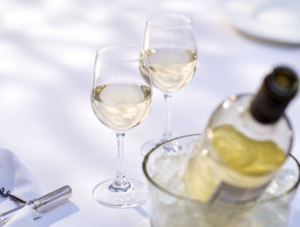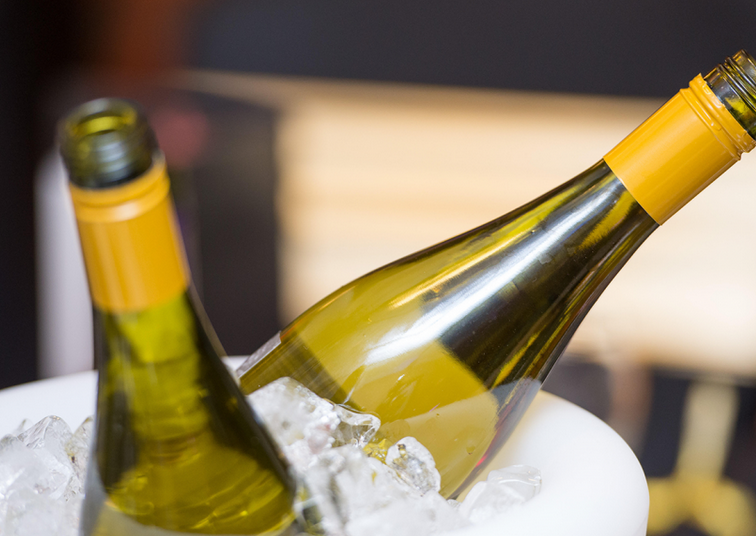Achieving the right wine temperature is essential for unlocking the full potential of your favourite bottle. Whether you’re enjoying a bold red, a crisp white, or a festive sparkling wine, serving it at the optimal temperature can make all the difference in its taste and aroma. In this guide, we’ll explore expert tips for achieving the perfect wine temperature and elevating your wine-drinking experience.

Understanding Wine Temperature
Before delving into specific tips for achieving the right wine temperature, it’s essential to understand why temperature matters. Wine is a delicate beverage with complex flavors and aromas that can be influenced by temperature variations. Serving wine too cold can mask its flavors and aromas, while serving it too warm can make it taste flat or overly alcoholic. By serving wine at the optimal temperature, you can ensure that its unique characteristics shine through with every sip.
Tips for Serving Red Wine
Red wine is best served slightly below room temperature to allow its flavors to develop fully. To achieve the ideal serving temperature for red wine, consider placing the bottle in the refrigerator for about 15 to 30 minutes before serving during warmer months. Alternatively, you can use a wine thermometer to monitor the temperature and ensure it falls within the range of 60 to 65 degrees Fahrenheit (15 to 18 degrees Celsius). Avoid serving red wine too warm, as it can accentuate its alcohol content and mute its flavors.
Tips for Serving White Wine
White wine is best served chilled to highlight its crispness and acidity. To chill white wine, store it in the refrigerator for about 2 hours before serving or place it in an ice bucket filled with ice and water for about 30 minutes. The optimal serving temperature for most white wines ranges from 45 to 50 degrees Fahrenheit (7 to 10 degrees Celsius). Avoid serving white wine too cold, as it can suppress its aromas and flavors.
Tips for Serving Sparkling Wine
Sparkling wine, such as Champagne and Prosecco, is best served well chilled to preserve its effervescence and freshness. Store sparkling wine in the refrigerator for at least 3 hours before serving or place it in an ice bucket for about 30 minutes. The optimal serving temperature for sparkling wine ranges from 40 to 45 degrees Fahrenheit (4 to 7 degrees Celsius). Avoid serving sparkling wine too warm, as it can cause it to lose its fizz and taste flat.
Additional Tips for Achieving the Right Wine Temperature
Consider Room Temperature
If you store your wine in a wine cellar or a wine refrigerator set to a specific temperature, consider allowing the bottle to sit at room temperature for a short while before serving. This allows the wine to gradually reach the ideal serving temperature, enhancing its aromas and flavours.
Use a Wine Sleeve
Invest in a wine sleeve or wine cooler sleeve, which is a portable, insulated sleeve designed to keep wine bottles at the ideal serving temperature for longer periods. Simply place the sleeve in the freezer beforehand, then slide it over the wine bottle to keep it cool while dining or entertaining outdoors.
Decant Before Serving
For certain wines, particularly bold reds like Cabernet Sauvignon or Syrah, consider decanting the wine before serving. Decanting not only helps to aerate the wine and soften its tannins but also allows it to gradually warm up to the ideal temperature as it sits in the decanter.
Use Wine Chillers or Ice Cubes Sparingly
While it’s tempting to add ice cubes or use wine chillers to quickly cool down wine, be mindful of diluting the wine or altering its flavour profile. If using ice cubes, opt for stainless steel or silicone cubes that won’t melt and dilute the wine. Alternatively, consider using frozen grapes or berries as natural chillers that won’t water down your wine.
Know Your Wine Preferences
Understanding your wine preferences and those of your guests can help you determine the ideal serving temperature for different occasions. Some individuals may prefer their wine slightly cooler or warmer based on personal taste preferences, so be flexible and open to adjusting serving temperatures accordingly.
Conclusion
In conclusion, achieving the right wine temperature is essential for enhancing your wine-drinking experience. By following these expert tips and paying attention to the temperature of your wine, you can ensure that each glass is a delight to the senses. Whether you’re enjoying a robust red, a crisp white, or a celebratory sparkling wine, serving it at the optimal temperature will allow you to fully appreciate its unique flavours and aromas. Cheers to mastering the art of wine temperature!

